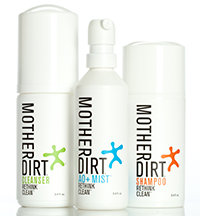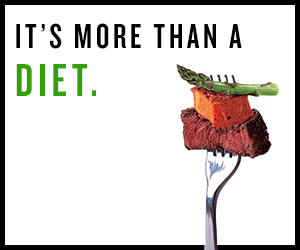I realized last week that I often call wheat the most toxic food, but I haven’t really explained why on the blog. The book has a detailed explanation, which focuses on toxicity effects and on autoimmune processes attacking the gut and thyroid. Here I would like to add to the book’s argument by showing how wheat causes other autoimmune diseases.
There are about 50 diseases which are thought to have an autoimmune basis. Autoimmune diseases are caused by three processes:
- Leaky gut and inflammation. A leaky gut lets bacteria and food toxins enter the body. In the body, these precipitate an immune response which creates inflammation and a chance for antibodies to form.
- “Molecular mimicry.” A bacterial protein or food toxin resembles a human protein sufficiently closely that an antibody to the foreign protein may also recognize human proteins, potentially precipitating attacks on self tissue.
- Adjuvant activity. Vaccines are produced by bonding an antigen (the target of the hoped-for antibody) to an adjuvant (a molecule that greatly increases the likelihood antibodies will be made – a sort of catalyst). If a “molecular mimic” can bind to an adjuvant, then autoimmune disease becomes much more likely.
Wheat causes many autoimmune diseases because it promotes all three aspects. I’ll look at each aspect in a separate post this week.
Leaky Gut
In a recent comment – it’s nice to have smart readers! – Rich brought up the links between wheat and leaky gut.
Leaky gut is the first step toward autoimmune disease. As a recent review states:
Susceptibility to at least 50 diseases, including celiac disease (CD) and type 1 diabetes (T1D), has been associated with specific HLA class I or class II alleles. A common denominator of these diseases is the presence of several preexisting conditions that lead to an autoimmune process…. In all cases, increased permeability precedes disease and causes an abnormality in antigen delivery that triggers immune events, eventually leading to a multiorgan process and autoimmunity. [1]
Gluten is a complex of proteins found in wheat, rye, oats (PAJ: see comments), barley, and other grains. One part of gluten is a type of protein called prolamins, which are chiefly responsible for gut damage:
It is the gliadin fraction of wheat gluten and similar alcohol-soluble proteins in other grains (collectively known as prolamins) that are associated with the development of intestinal damage. A common feature of the prolamins of wheat, rye, and barley is a high content of glutamine (>30%) and proline (>15%), whereas the nontoxic prolamins of rice and corn have lower glutamine and proline content. [1]
I’m quoting this because it speaks to the differences among grains. Rice and corn do not contain gluten. Corn contains other dangerous toxins, but is not a primary cause of autoimmune disease. Rice is the only grain we consider safe to eat.
From Cholera to the Cause of Leaky Gut
The mechanisms by which wheat causes leaky gut have been intensively studied by Dr. Alessio Fasano’s group. In 1995 Dr. Fasano and colleagues discovered that a toxin released by Vibrio cholerae, the bacterium that causes cholera http://en.wikipedia.org/wiki/Cholera, causes tight junctions to open for a time. [2] This makes the small intestine leaky.
Dr. Fasano and colleagues suspected that the bacterial protein’s action must mimic some natural human protein which controls intestinal permeability. In 2000, they discovered this human protein and named it “zonulin.” [3]
Wheat and Crohn’s Disease
They subsequently showed that gliadin stimulates zonulin release. Gliadin binds to a receptor called CXCR3, and activation of this receptor triggers zonulin release and increased intestinal permeability.
Interestingly, zonulin release was much higher and longer-lasting in Crohn’s disease patients than in healthy patients. [1] Restriction of gluten restores intestinal integrity in Crohn’s disease patients.
So Crohn’s disease patients should absolutely not eat wheat!
Leaky Gut and Type I Diabetes
A leaky small intestine is a feature of many autoimmune diseases, but Crohn’s disease and Type I diabetes are notable for highly permeable small intestines. Patients with both diseases have high serum levels of zonulin. [1]
In a rat model of Type I diabetes, the BioBreeding diabetes prone or “BBDP” line of rats often develops a leaky gut at age 50 to 75 days when eating a (toxic) diet of rat chow. Zonulin levels increase up to 35-fold at this time, but were reduced if the rats were fed a gluten-free diet. Rats with the highest zonulin levels developed Type I diabetes develops 15 to 25 days later. If a compound that blocks the action of zonulin is given to the rats, Type I diabetes incidence is reduced 70%. [1, 4]
This shows how crucial a leaky gut is to onset of autoimmune diseases like Type I diabetes, and also how quickly diseases can develop once the gut is compromised. The longer the gut is leaky, the greater the likelihood that some autoimmune disease will develop.
In humans, the relationships between these diseases are much the same as in rats. Crohn’s disease and Type I diabetes are co-morbid: the prevalence of Crohn’s among Type I diabetics is 6- to 9-fold higher than in the general population. Meanwhile, newborn children exposed to wheat at 3 months of age or earlier, when the gut is immature, are 4- to 5-fold more likely to develop Type I diabetes. [4]
Conclusion
Leaky gut is a prerequisite for development of autoimmune disease. Wheat seems to create a transient, mild leaky gut in nearly everyone, but in Crohn’s disease the gut becomes chronically and severely leaky in response to wheat consumption.
In rats, this leaky gut can lead to development of autoimmune diseases like Type I diabetes in as little as a few weeks.
If you eat wheat, it’s probably only a matter of time before you develop some disease or other. All of the autoimmune diseases, from rheumatoid arthritis to Hashimoto’s to lupus, are made more likely by wheat consumption. Why not switch to rice or other “safe starches” and save yourself some trouble?
Related Posts
Other posts in this series:
- Why Wheat Is A Concealed Cause of Many Diseases, II: Auto-Antibody Generation. Oct 28, 2010.
- Why Wheat Is A Concealed Cause of Many Diseases, III: Adjuvant Activity Nov 1, 2010.
References
[1] Visser J et al. Tight junctions, intestinal permeability, and autoimmunity: celiac disease and type 1 diabetes paradigms. Ann N Y Acad Sci. 2009 May;1165:195-205. http://pmid.us/19538307.
[2] Fasano A et al. Zonula occludens toxin modulates tight junctions through protein kinase C-dependent actin reorganization, in vitro. J Clin Invest. 1995 Aug;96(2):710-20. http://pmid.us/7635964.
[3] Wang W et al. Human zonulin, a potential modulator of intestinal tight junctions. J Cell Sci. 2000 Dec;113 Pt 24:4435-40. http://pmid.us/11082037.
[4] Watts T et al. Role of the intestinal tight junction modulator zonulin in the pathogenesis of type I diabetes in BB diabetic-prone rats. Proc Natl Acad Sci U S A. 2005 Feb 22;102(8):2916-21. http://pmid.us/15710870.












Recent Comments